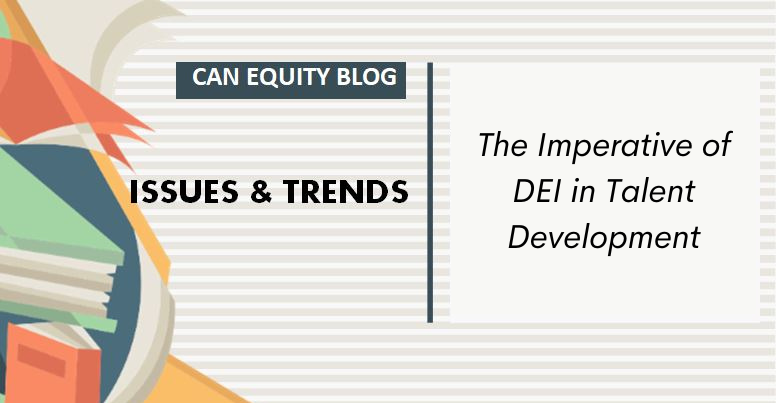
ISSUES & TRENDS: The Imperative of DEI in Talent Development
The Imperative of DEI in Talent Development
With this blog, I will begin a series of blog posts about resources for businesses to consider utilizing to advance race equity as an organization. This blog posts features an online resource (The Diversity Equity & Inclusion Report 2023) by Development Dimension International that polled close to 14,000 human resource and other business leaders from around the world on critical business issues and trends of which DEI is but one focus area. Subsequent blog posts will be book reviews of the following books: Data Driven DEI: the Tools and Metrics You Need to Measure, Analyze & Improve Diversity, Equity & Inclusion (by Randal Pinkett) and Inclusion on Purpose: An Intersectional Approach to Creating a Culture of Belonging at Work (by Ruchika Tulshyan).
Now that businesses have weathered the economic impacts of the pandemic and economic fluctuations occurring post-pandemic, the interest in continuing the focus on DEI has begun to wane. The impact of this backward slide has proven to be in the areas of: developing and retaining diverse talent; flexibility in the work environment (in-person vs virtual); problems relating to a lack of commitment and follow-through on DEI; and the failure to effectively address burnout. The headline based on the findings of this report is that companies that have a diverse workforce and that manage quality DEI programs see results on the bottom line. Here is a brief synopsis of survey findings:
The Great Diversity Departure – Women and minorities were more likely to seek new employment due a lack of upward mobility in current position.
Diversity Delivers at the Bottom Line – Companies whose workforce diversity was above average were more than twice as likely to outperform their peers.
Companies Fail to Deliver on DEI Promises – Support from company leaders for overall DEI efforts decreased by 18% over the last two years. Employees notice when promises are broken.
Inclusion Drives Bench Strength – Companies that fail to be inclusive in their leadership development efforts are at most risk of losing diverse talent to other companies.
The Burnout Generation – Young leaders and minorities are most at risk of burnout due to concerns about losing their job. These employees work longer and harder to avoid the appearance of being perceived as weak, vulnerable or incompetent.
Quality DEI Programs Drive Results – Companies who operate quality DEI programs are connected show greater representation in leadership by women and minorities. High quality DEI programs typically include: utilization of DEI in the organization’s leadership strategy; prioritization of diversity in recruitment; and a culture of inclusion across the organization.
Inclusion Doesn’t Require an Office – Minorities and women in leadership positions express a greater sense of inclusion when doing remote work versus in-person work. This may relate to the value women and minorities place on being able to achieve a better work -life balance. Other factors cited as creating an inclusive culture include: building trust via strong relationships; recognizing employee accomplishments; and being open to criticism and change.
Given the above findings, the report outlines five (5) critical components for DEI success:
- Embrace Authentic DEI. Without support for DEI from company leaders, DEI efforts are not likely to succeed. DEI must include demonstrable actions at all levels of the organization but especially in recruitment and talent development.
- Build Strong Relationships. Relationships between supervisors and employees must be strong, so managers must possess strong interpersonal skills and a demeanor that communicates to employees that they belong and are valued.
- Be Inclusive in Developing Talent. A diverse leadership pipeline is essential to company success, so companies must be thoughtful about how they define leadership potential and how they cultivate leadership in general.
- Trust is a Must. Trust between management and employees is essential. That trust will not be there if company leaders only pay lip service to DEI and fail to follow-through on promises they make relating to DEI.
- Coach for Growth. When establishing a talent development system, put systems in place to ensure that employees are properly trained and supported when assuming new roles. Thus, company leaders must learn to be good coaches.
While this is not a roadmap for organizational change that is specifically driven by DEI, it outlines the characteristics of what an environment that attracts diverse talent looks like at this point in time. The findings of this study serve as a window into how companies that have a long term vision for success can attract and develop the talent they need to realize that vision.
Raul Alvarez
CAN Executive Director